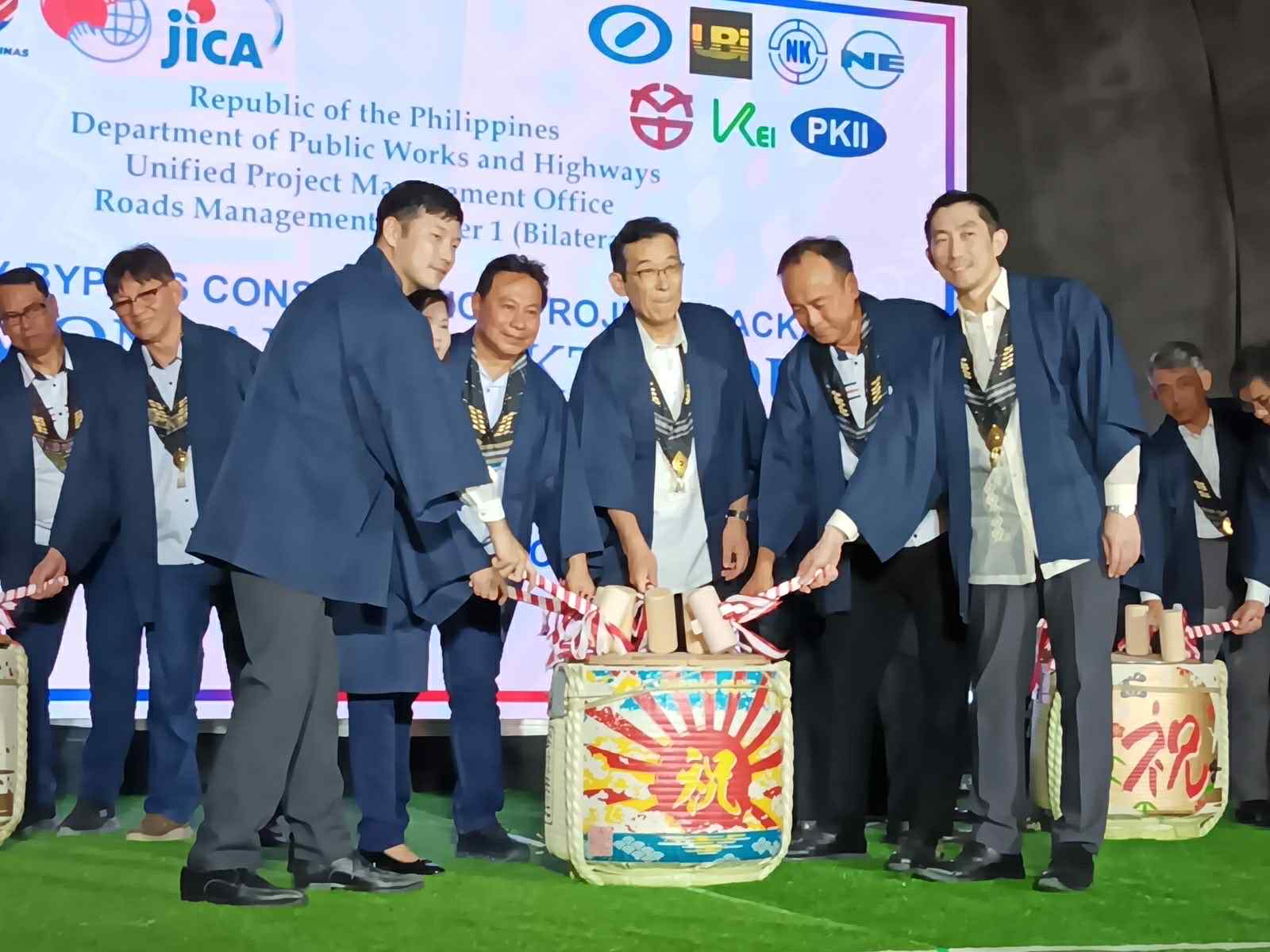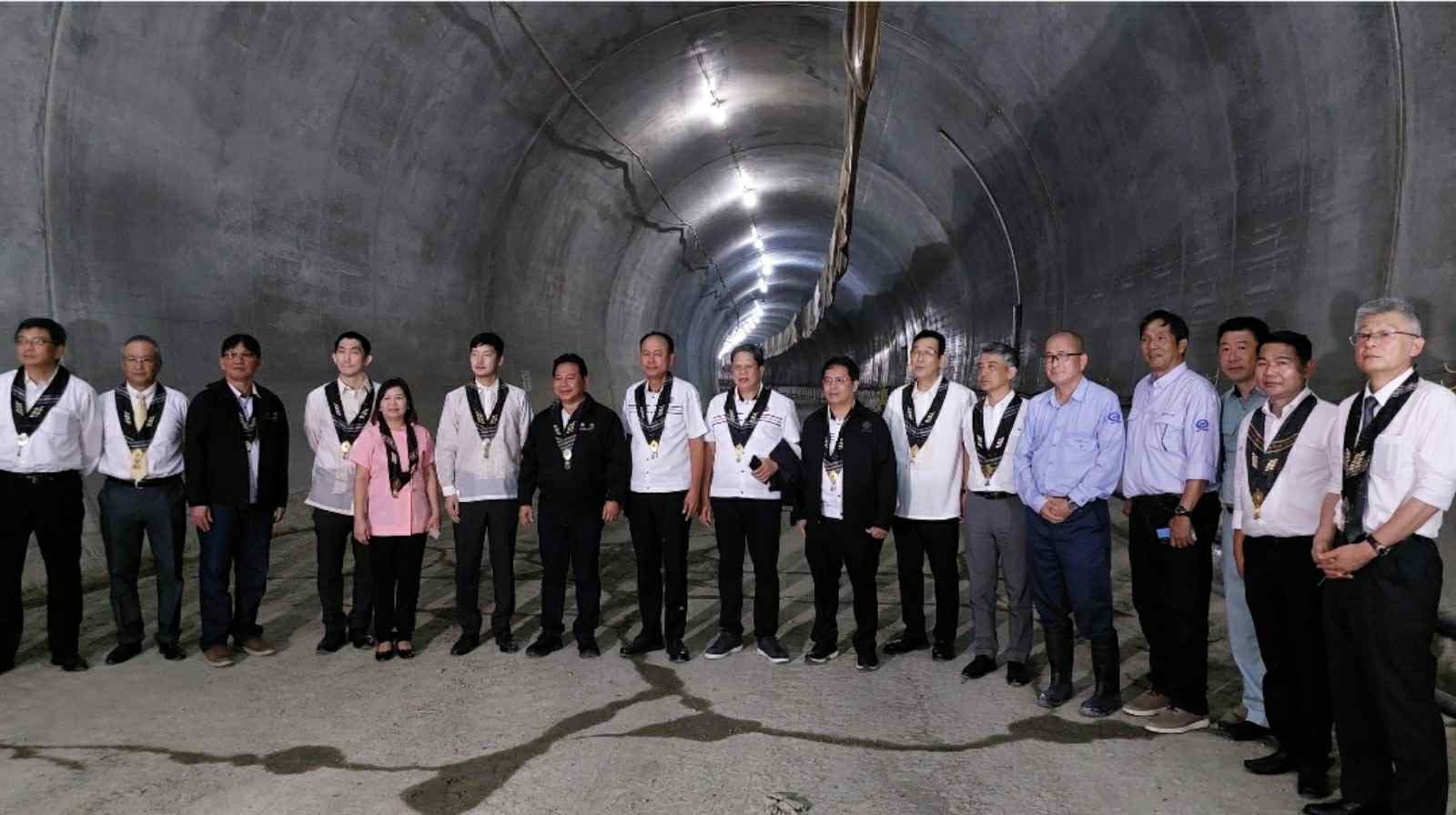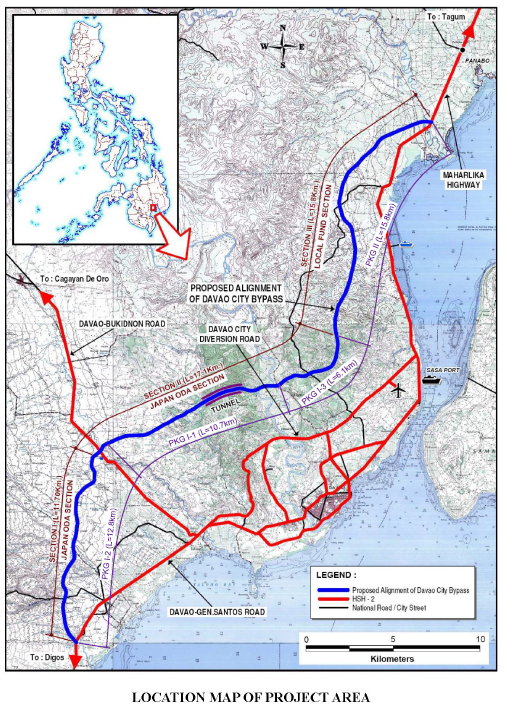Davao City Bypass South Tunnel hits breakthrough towards improved connectivity and mobility in Mindanao
2025.09.01
The Japan International Cooperation Agency (JICA) and the Department of Public Works and Highways (DPWH) make advances to the Davao City Bypass Construction Project with the ceremonial breakthrough of the southbound tunnel, marking the complete excavation from opposite ends of the country’s first twin long-distance mountain road tunnels. The event highlighted both the strength of the Philippines-Japan partnership and the technical achievement behind one of Mindanao’s most ambitious infrastructure projects.
This breakthrough comes only months after the northbound tunnel was opened end-to-end in April 2025 in Barangay Waan, Davao City. Together, the two tunnels, each stretching 2.3 km, now stand as the longest in the Philippines, overtaking the 300-meter Kaybiang Tunnel in Cavite. Their construction required advanced techniques, including the New Austrian Tunneling Method (NATM), which uses surrounding ground’s natural strength for support.

(L-R) Embassy of Japan Second Secretary KINOSHITA Akito, Usec. Janet Lopoz, Senior Usec Emil Sadain, Consul of Japan in Davao ONO Hirotaka, Project Director Benjamin Bautista, and JICA Philippines Senior Representative FUKUI Keisuke.
This milestone demonstrates not only the successful application of Japan’s experience and expertise in tunnelling technology, but also the ongoing transfer of technical knowledge to Filipino engineers and workers who will be responsible for sustaining tunnel operations in the future.
The Davao City Bypass Road – 45.5 km in total when combined with the local-funded section – will connect Barangay Sirawan in Toril, Davao City to Barangay J.P. Laurel in Panabo City, Davao del Norte. The JICA-supported Package 1 covers a 29.7 km four-lane road, the twin tunnels, two cut-and-cover sections, bridges, and operation-related facilities. These investments reflect the project’s unprecedented scale and role as the Philippines’ first full-scale, long-distance mountain tunnel initiative, a national benchmark in complex engineering and modern transport safety.
Once operational, the bypass is expected to cut travel time between Davao City and Panabo City (Maharlika Highway’s Davao-Digos and Davao-Tagum sections) from around 1 hour and 44 minutes to only 49 minutes. In two years after completion, it is expected that the annual average daily traffic in Davao Bypass will reach 30,000 passenger car units per day. By decongesting Davao City, it is expected to promote lower transport costs for goods, enhance logistics efficiency, and make travel safer and more predictable.
The ceremonial south tunnel breakthrough was attended by senior officials from both governments, underscoring the long-standing partnership between the Philippines and Japan, and the shared commitment to infrastructure that drives quality growth. From the Philippine side, DWPH Senior Undersecretary Emil K. Sadain and Mindanao Development Authority Undersecretary Janet M. Lopoz led the ceremony. The Embassy of Japan Second Secretary KINOSHITA Akito and JICA Philippines Senior Representative FUKUI Keisuke represented Japan side.
More than an engineering marvel, the project’s legacy will be measured not only in kilometers of road but also in opportunities it will create for people and communities in Davao and Mindanao.

Officials from the DPWH, MinDA, Davao local government, JICA, the Embassy of Japan to the Philippines, and other esteemed guests pose in the newly excavated tunnel.

Once completed, the Davao City Bypass Road (blue line) will ease traffic in Davao City by redirecting vehicles traveling the north and south and vice versa.
scroll